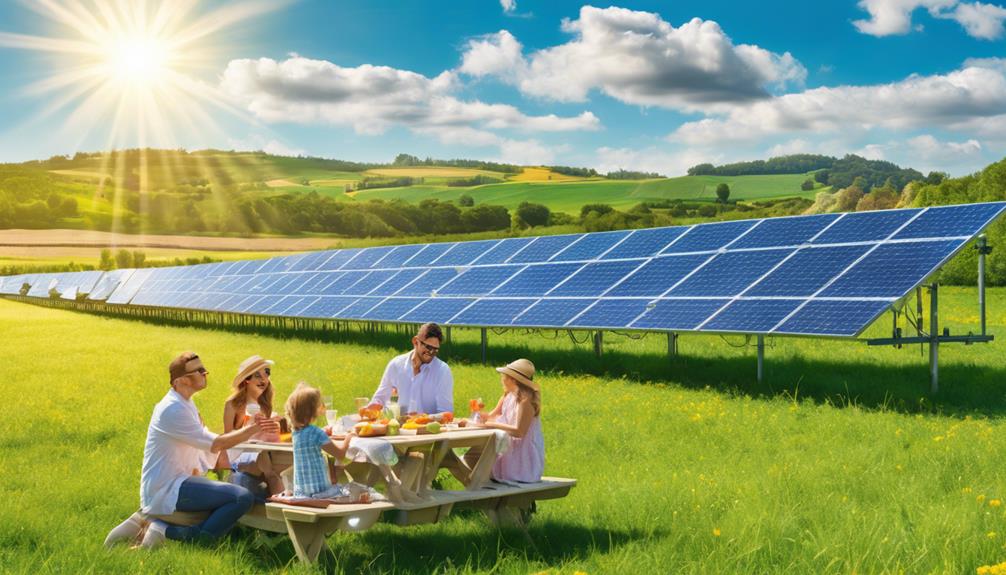
Understanding Solar Power: A Renewable Energy Solution
Solar power is rapidly becoming one of the most popular renewable energy sources worldwide. As concerns about climate change and fossil fuel dependency grow, individuals and businesses alike are looking for sustainable alternatives. Solar energy harnesses sunlight and converts it into electricity or heat, making it a clean, renewable resource. By investing in solar power, you can significantly reduce your carbon footprint and contribute to a healthier planet. In this guide, we will explore the benefits of solar energy, how it works, and why it’s an excellent option for your energy needs.
The Benefits of Solar Power: Why Go Solar?
One of the primary reasons to consider solar power is its environmental benefits. By utilizing solar energy, you can reduce greenhouse gas emissions, contributing to cleaner air and a healthier environment. Additionally, solar power can lead to significant cost savings on energy bills. With the right solar panel system, you can generate your own electricity, reducing or even eliminating your reliance on utility companies. Furthermore, many governments offer incentives, such as tax credits and rebates, to encourage the adoption of solar technology, making it an even more attractive investment.
How Solar Power Works: The Science Behind the Technology
Solar power systems typically consist of solar panels, an inverter, and other components that work together to convert sunlight into usable electricity. Solar panels, made up of photovoltaic (PV) cells, capture sunlight and generate direct current (DC) electricity. The inverter then converts this DC electricity into alternating current (AC), which is the type used in homes and businesses. The entire process is efficient and sustainable, requiring minimal maintenance once installed. Understanding how solar power works can help you appreciate its value and the impact it can have on your energy consumption.
Types of Solar Power Systems: Choosing the Right Option for You
When considering solar power, it’s essential to understand the different types of solar power systems available. The two primary options are grid-tied systems and off-grid systems. Grid-tied systems connect to the existing electricity grid, allowing homeowners to draw from the grid when sunlight is insufficient. Off-grid systems, on the other hand, operate independently of the grid and typically require battery storage to ensure a continuous power supply. Each system has its advantages and disadvantages, so it’s crucial to evaluate your energy needs, budget, and location before making a decision.
Solar Power Installation: What to Expect
Installing a solar power system can seem daunting, but the process is straightforward with the right preparation. The first step is to conduct a site assessment, where a professional installer will evaluate your home’s roof, energy consumption, and local solar potential. Following the assessment, you’ll receive a proposal detailing the system design, equipment, and estimated costs. Once you agree to the proposal, the installation process can begin, typically taking one to three days. After installation, the system will need to be inspected and connected to the grid, if applicable. Understanding the installation process can help alleviate concerns and ensure a smooth transition to solar power.
Financial Considerations: Is Solar Power Worth the Investment?
Investing in solar power is a significant financial decision, but it can offer excellent returns in the long run. The initial cost of purchasing and installing solar panels can be offset by various financial incentives, such as federal tax credits, state rebates, and net metering programs. Additionally, many solar companies offer financing options, making it more accessible for homeowners. Over time, the savings on energy bills can add up, often leading to a complete return on investment within a few years. Evaluating the financial aspects of solar power can help you determine if it’s the right choice for your energy needs.
Solar Power Maintenance: Ensuring Longevity and Efficiency
One of the most appealing aspects of solar power is its low maintenance requirements. Once installed, solar panels require minimal upkeep, primarily limited to occasional cleaning and inspections. Keeping panels free of dirt, debris, and snow is essential for maximizing their efficiency. Additionally, monitoring your system’s performance through an app or monitoring service can help you identify any issues early on. By taking a proactive approach to maintenance, you can ensure that your solar power system operates at peak efficiency for many years to come.
The Future of Solar Power: Trends and Innovations
The future of solar power looks promising as technology continues to advance and the demand for renewable energy grows. Innovations such as solar batteries, which store excess energy for later use, are becoming increasingly popular, allowing homeowners to maximize their energy independence. Additionally, developments in solar panel efficiency and design are making solar energy more accessible and affordable. As governments and organizations worldwide commit to reducing carbon emissions, solar power will play a crucial role in the transition to a sustainable energy future. Staying informed about the latest trends in solar power can help you make informed decisions about your energy consumption.
Conclusion
In conclusion, solar power is a viable and sustainable energy solution that offers numerous benefits for homeowners and businesses alike. By understanding how solar energy works, the advantages it provides, and the financial implications of installation, you can make an informed decision about whether solar power is right for you. With its low maintenance requirements and the promise of a cleaner, greener future, solar energy is an investment worth considering. As the world moves toward renewable energy sources, embracing solar power can not only lower your energy costs but also contribute to a more sustainable planet.





